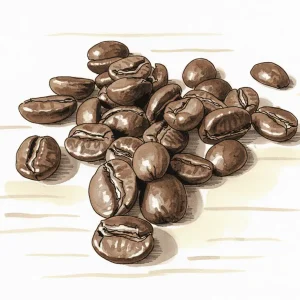Caturra
Caturra is a compact and flavourful Arabica variety that originated in Brazil around 1915. With its bright acidity, full sweetness, and fruity notes, it is suitable for various brewing methods. Thanks to higher yields, Caturra remained immensely popular for a long time. It fascinates connoisseurs.
Caturra Beans
Showing 1–16 of 114 results
De goedkoopste prijzen per 1 kg worden weergegeven
-
Altura, Mexico, Decaf
van Screaming Beans€ 55,56 -
Argote Anaerobic
€ 57,60 -
Argote Juan Pablo Super Special
€ 273,60 -
Argote Lactic Anaerobic
€ 230,40 -
Bant Sawk
€ 46,80 -
Bio Blend
€ 29,50 -
Bittersweet Symphony
van CoffeeXperts€ 28,97 -
Bolivar – Colombia
van Coffee Shots€ 110,80 -
Brazil & Colombia - Five Points Blend - Natural & Washed
van Five Ways Coffee€ 30,00 -
Cafeïne vrij
van Zwarte Koffie€ 28,50 -
Cafeïnevrije Colombia (Future Proof)
van CoffeeXperts€ 143,88 -
Caimo Collective
van Keen Coffee€ 13,30 -
Cappuccino Melange
van CoffeeXperts€ 28,97 -
Colombia
€ 27,00 -
Colombia
€ 43,80 -
colombia – acevedo
€ 54,00
More About Caturra
History and Origins
Caturra arose from a natural mutation of Bourbon in Brazil and was first officially documented in 1937 in Minas Gerais. The compact character was soon appreciated, partly thanks to a higher yield per hectare. In the 1970s, large-scale adoption took place in Central America, especially in Costa Rica and Guatemala. Because of its compact plant and refined flavour profile, Caturra became an important player within the specialty coffee sector.
Growing Region and Flavor Influences
In countries such as Colombia, Honduras and Nicaragua, Caturra often delivers a bright acidity and a pleasant sweetness. High-altitude areas above 1200 meters intensify fruity notes such as citrus or stone fruit. In Brazil, where the elevation is sometimes lower, Caturra typically develops a milder acidity with chocolate tones and nutty accents. The final flavour profile is strongly influenced by climate, soil and processing.
Characteristics and Best Processing Methods
Caturra is known for a balanced mix of freshness and sweet undertones. With the washed method, its bright acidity comes forward, while the natural method provides a fuller body and intense fruit aromas. Honey processing creates a middle ground: sweetness gains extra depth while the lively acids are preserved. Caturra is versatile and, in every processing method, delivers a characterful, clean taste.
Brewing Methods and Equipment
A filter brewing method such as Hario V60, Kalita or Chemex highlights the fresh citrus notes and allows the aroma to fully express itself. A fine grind and water temperature around 93°C bring clarity to the cup. For espresso, 18 to 20 grams is recommended, with a yield of about 36 to 40 grams in about 25 to 30 seconds. Caturra can balance fruity acids and caramel flavour well, particularly at a stable temperature of roughly 93°C. The result is a creamy, aromatic shot with a complex finish.
Climate and Disease Resistance
The plant is susceptible to coffee leaf rust and therefore requires careful maintenance and good shade. In higher regions with cool nights Caturra can flourish, but changing weather conditions make cultivation more difficult. Regular pruning and adequate water management help maintain quality and yield. Although some farmers switch to hybrids, the classic Caturra variety remains popular for its excellent cup quality.
Final Thoughts
This variety combines a high yield with a bright, nuanced flavour profile and has become a mainstay in various regions. Thanks to its compact growth, Caturra is easy to maintain, although it does require consistent attention to disease resistance. With the right processing and brewing method it delivers a refined coffee transformation in which fruity acids and a sweet core harmonise perfectly.

